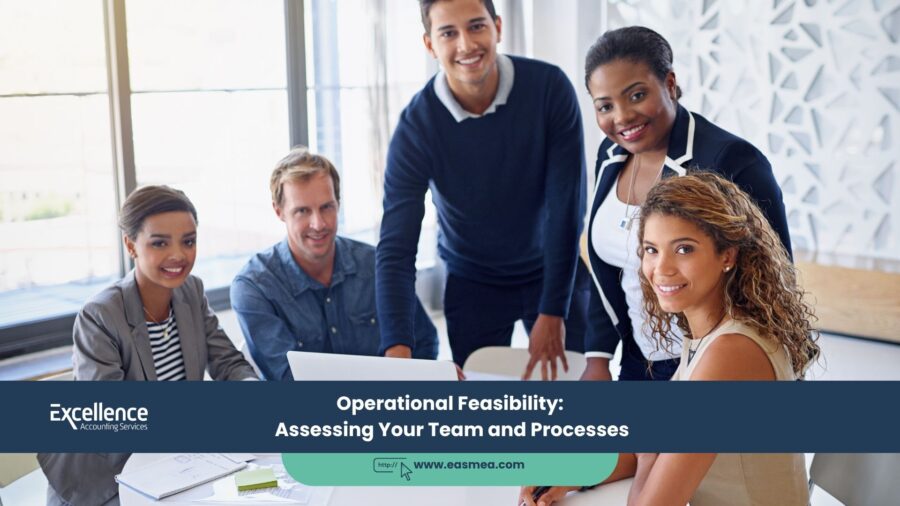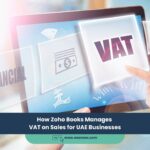Operational Feasibility: Assessing Your Team and Processes
In the journey of bringing a new business venture to life in Dubai, a great idea is the starting point, and a solid financial forecast is the destination. But the path between them is paved with execution. This is where Operational Feasibility comes in. As a critical component of any comprehensive feasibility study, this analysis moves beyond the “what” (the product) and the “why” (the market demand) to focus on the crucial questions of “who” and “how.”
Operational feasibility is the systematic assessment of a project’s operational and organizational structure to determine if the business has the necessary resources, processes, and—most importantly—people to execute its vision successfully. For investors and lenders, this is a direct measure of execution risk. A brilliant idea with a flawed operational plan is a recipe for failure. Conversely, a solid idea backed by a world-class team and well-defined processes is a highly attractive investment proposition.
This guide will delve into the core components of an operational feasibility study. We will explore how to critically assess your management team, design a scalable organizational structure, and document the key processes that will drive your business. For any entrepreneur seeking funding or planning a new venture in the UAE, mastering this aspect of your plan is essential to prove that your business is not just a concept, but a well-oiled machine in the making.
Key Takeaways
- Operational Feasibility is About Execution: It assesses whether you have the right team, processes, and systems to successfully run the business day-to-day.
- Investors Bet on People: A strong, experienced, and complete management team is often the most critical factor in an operational assessment.
- Processes Create Scalability: Well-documented Standard Operating Procedures (SOPs) prove that your business is a scalable system, not just a group of individuals.
- It’s Different from Technical Feasibility: Technical feasibility asks “can it be built?”, while operational feasibility asks “can we run the business that builds and sells it?”.
- Reduces Execution Risk: A thorough operational plan gives investors confidence that you have thought through the practical realities of running the business, reducing their perceived risk.
- Expert Guidance is Key: Structuring an organization and its processes often requires external expertise from business and HR consultants.
The Core Pillars of Operational Feasibility
A robust operational feasibility study is built on a thorough analysis of the internal engine of your business. It must cover the people, the structure, and the systems.
1. Management Team and Personnel Assessment
This is the most important pillar. A great idea with a mediocre team is far riskier than a good idea with an exceptional team. Your study must honestly assess your human capital.
- The Founders and Key Executives: Provide detailed bios for the key leaders. What is their relevant industry experience? What is their track record of success? Have they worked together before?
– **Skills Gap Analysis:** Honestly identify any gaps in your current management team. If you have a brilliant tech founder but no experienced sales leader, you must acknowledge this and present a clear plan for hiring one. – **Human Resources Plan:** Outline your plan for recruiting, training, and retaining the necessary staff. This includes defining key roles and responsibilities and forecasting your hiring timeline. Our
- can be invaluable here.
2. Organizational Structure
This defines how your team will work together. It provides clarity on authority, responsibility, and communication flows.
- Organizational Chart: Create a clear visual chart of the company’s hierarchy, showing the reporting lines from the CEO down to the frontline staff.
- Roles and Responsibilities: For each key position on the chart, provide a clear job description outlining their primary duties and decision-making authority.
- Scalability of the Structure: Explain how this structure will evolve as the company grows. How will you add new teams or departments without creating chaos?
A well-defined structure shows investors that you have a plan for organized growth, not just hopeful expansion.
3. Business Processes and Workflow
This is where you document the “how” of your daily operations. It proves that you have a repeatable and efficient way of delivering value to your customers.
- Process Mapping: Map out the key workflows for your core business activities. For a manufacturing business, this would be the production line. For a SaaS company, it would be the customer onboarding process.
- Standard Operating Procedures (SOPs): Document the step-by-step instructions for performing critical tasks. SOPs are the playbook for your business, ensuring consistency and quality.
- Supply Chain and Logistics: Detail your process for sourcing raw materials, managing inventory, and delivering the final product or service to your customers.
- Technology and Systems: Specify the key software and IT systems you will use to manage operations, such as your CRM, ERP, or accounting system.
| Operational Pillar | Core Question It Answers | Key Deliverable in the Study |
|---|---|---|
| Team & Personnel | “Do we have the right people to win?” | Founder bios, skills gap analysis, hiring plan. |
| Organizational Structure | “How will the team work together effectively?” | Organizational chart, clear job descriptions. |
| Processes & Workflow | “How will we deliver our product/service consistently?” | Process maps, list of key SOPs, technology stack. |
Build an Executable Plan with EAS Business Consultancy
Designing a scalable and efficient operational structure is a complex task. At Excellence Accounting Services (EAS), our business advisory team helps you move from concept to a concrete, executable plan that inspires investor confidence.
Our Operational Advisory Services:
- Organizational Structuring: We help you design a clear and scalable organizational chart with well-defined roles and responsibilities.
- HR and Manpower Planning: Our HR experts assist with skills gap analysis, developing a strategic hiring plan, and ensuring compliance with UAE Labour Law.
- Process Improvement: We work with you to map and document your key workflows, identifying opportunities for increased efficiency and control.
- Feasibility Study Integration: We ensure your operational plan is seamlessly integrated with the market, technical, and financial sections of your overall feasibility study.
Frequently Asked Questions (FAQs)
They are closely related but distinct. Technical Feasibility asks, “Do we have the right technology, equipment, and raw materials to create the product?” It’s about the physical or technical inputs. Operational Feasibility asks, “Do we have the right people, processes, and management structure to run the business that uses that technology to serve customers?” It’s about the human and procedural systems.
This can be difficult. A good approach is to create a matrix of the key skills needed for your business to succeed (e.g., technical, sales, finance, marketing, operations). Then, honestly rate each founder/key manager against these skills. This will quickly and visually highlight your strengths and, more importantly, your gaps.
SOPs are detailed, written instructions on how to perform a specific task. For example, an SOP for “Customer Onboarding” would list every step from the moment a sale is made to when the customer is fully set up. They are vital because they ensure consistency, reduce errors, make it easier to train new employees, and prove to an investor that your business can scale beyond the founders.
Even for a two-person team, defining roles is crucial. Who is the CEO with final say? Who is responsible for product and who is responsible for sales? Documenting this provides clarity and prevents future disputes. Your feasibility study should also show a future-state organizational chart, illustrating how you plan to build the team over the next 1-3 years.
Directly and significantly. Your human resources plan (hiring timeline and salaries) is a major driver of your operational expenses in your financial feasibility model. The efficiency of your processes will impact your cost of goods sold and your overall profit margins. A well-planned operational structure supports a more credible and defensible financial forecast.
Not necessarily. In fact, acknowledging a gap and presenting a clear, credible plan to fill it (e.g., “We plan to hire an experienced Head of Sales with 10+ years in the SaaS industry within three months of funding”) shows self-awareness and strategic thinking, which investors appreciate.
You need to show you have done your research. This can include obtaining quotes from multiple suppliers, having backup suppliers identified, and in some cases, having letters of intent (LOIs) from key suppliers indicating their willingness and capacity to work with you.
Execution risk is the risk that a company will fail to execute its strategic plan due to internal weaknesses, even if the idea and market are good. A strong operational feasibility study is the primary tool for mitigating this risk in the eyes of an investor.
Absolutely. For a service business (like a consultancy or a digital agency), the processes for client acquisition, project management, service delivery, and quality assurance are the core of the operation. Documenting these workflows is just as critical as documenting a manufacturing production line.
The level of detail should be sufficient to give a clear and convincing picture of how the business will run. You don’t need a 100-page manual of every single SOP, but you do need to show that you have mapped out the critical paths for your core operations and have a clear structure for your team. The goal is to demonstrate foresight and planning.
Conclusion: The Engine of Your Enterprise
If financial feasibility is the destination on your business map, operational feasibility is the detailed design of the vehicle that will get you there. It’s the engine, the chassis, and the crew. A brilliant idea without a robust operational plan is like a sports car with no engine—it may look impressive, but it’s not going anywhere. By thoroughly assessing and documenting your team, structure, and processes, you prove to investors, lenders, and yourself that you don’t just have a destination in mind; you have a reliable vehicle to complete the journey.
Is Your Business Built to Last?
Our business consultancy services help you design the operational framework—the team, processes, and systems—to turn your vision into a scalable and successful reality.




